Australian Tropical Rainforest Plants - Online edition
Neonotonia wightii (Wight & Arn.) J.A.Lackey
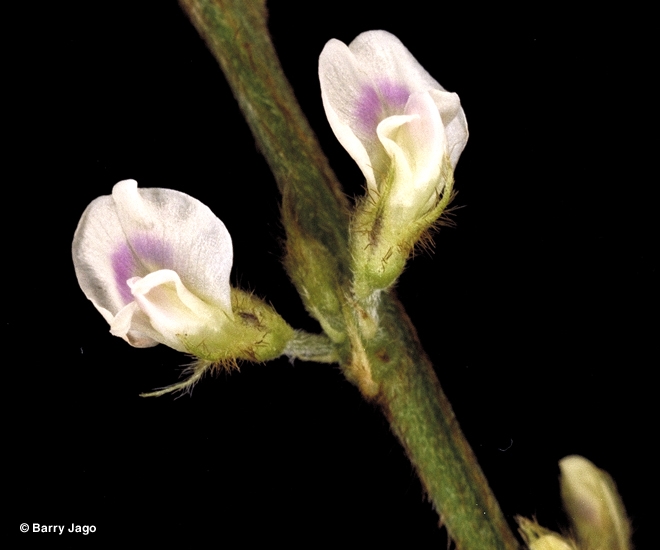
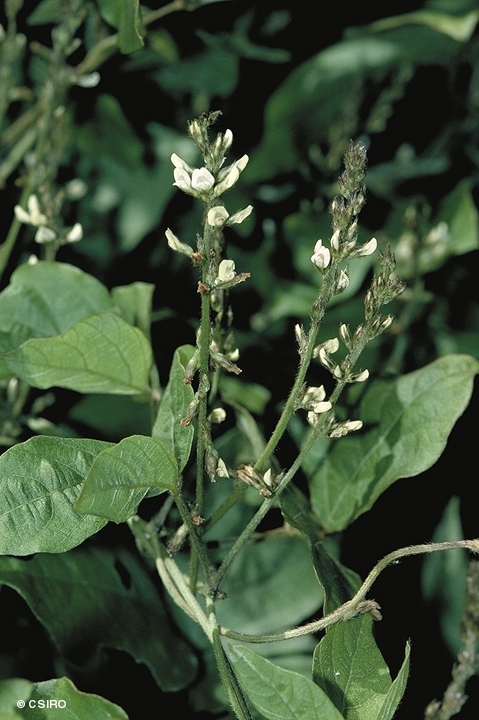
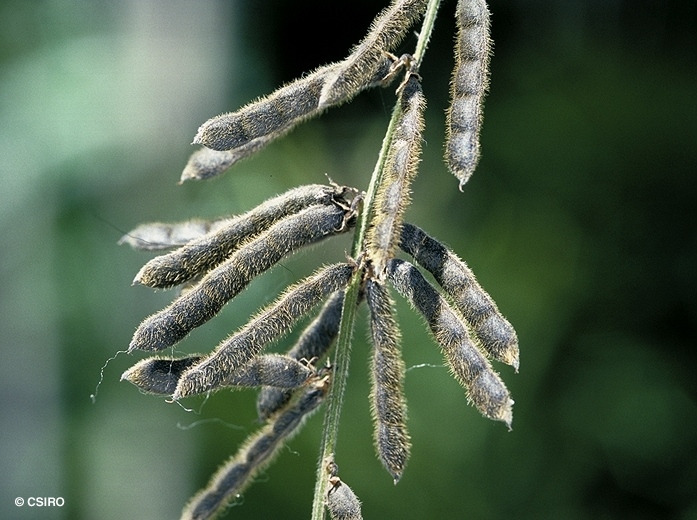
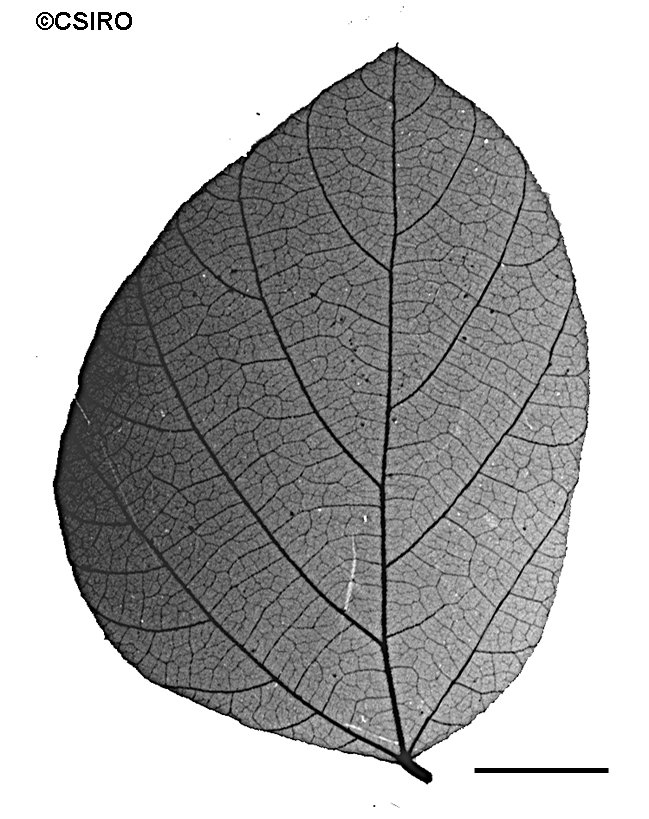

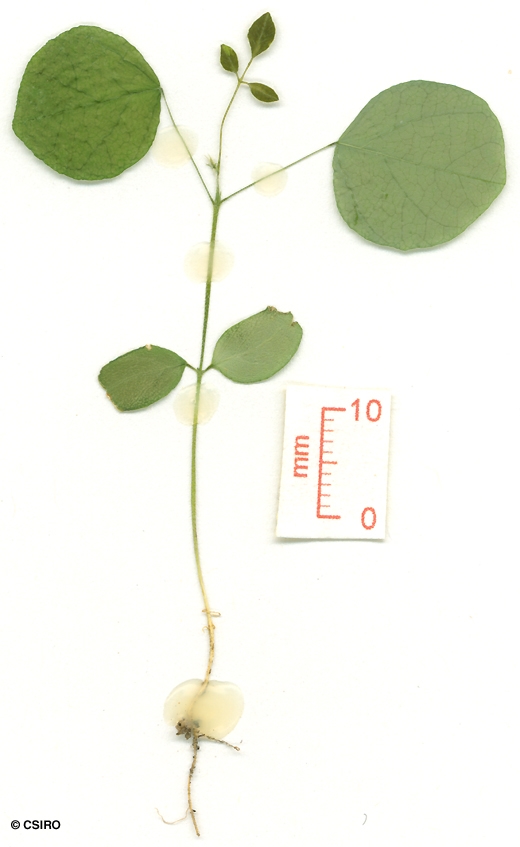
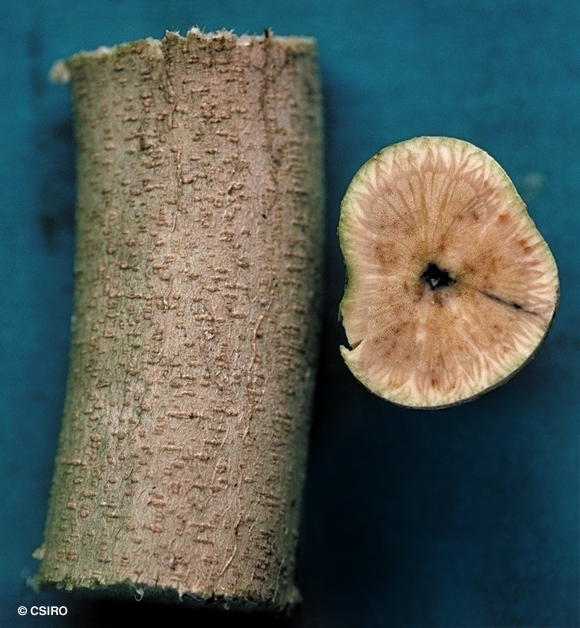
Lackey, J.A. (1977) Phytologia 37(3): 210.
Glycine
Vine stem diameters to 4 cm recorded. Blaze odour similar to that of green beans (Phaseolus vulgaris).
Lateral leaflet blades about 4.5-5.5 x 3.5-4 cm, leaflet stalks about 2-4 mm long. Middle leaflet blades about 5.5-6 x 4-5 cm, leaflet stalks about 8-11 mm long. Lateral veins about 3-6 on each side of the midrib. Twigs and both the upper and lower leaflet blade surfaces densely clothed in appressed pale brown hairs. Stipules ovate-triangular, densely hairy, about 2-4 mm long. Stipels present, linear, about 2 mm long.
Flowers borne in loose clusters in a raceme. Flowers about 3-4 mm diam. Calyx about 3 mm long, clothed in rusty brown hairs. Standard about 4.5 mm long, centre purplish. Stamens 10, the filaments fused to form a tube about 2.5 mm long, filaments alternately long and short. Stigma globose. Ovules four to six.
Cotyledons asymmetrical, about 10-11 x 7 mm, elliptic-obovate, base obtusely oblique. Cotyledon venation more obvious on the underside. First leaves +/- orbicular or wider than long. Stipules hairy. Third leaf trifoliolate. At the tenth leaf stage: leaflet blades ovate to ovate-elliptic, middle leaflet larger than the lateral leaflets. Both the upper and lower leaflet blade surfaces densely clothed in pale hairs. Stalks of the middle leaflet pulvinate and longer than those of the lateral leaflets. Stipules hairy, lanceolate, about 3-4 mm long. Stipels present. Stems twining and clothed in backward-pointing pale hairs. Seed germination time 37 days.
Food plant for the larval stages of the Common Grass Blue Butterfly. Common & Waterhouse (1981).
This species was introduced as a pasture legume. It appears to have rather restricted ecological requirements. It is particularly well-suited to the northern parts of the Atherton Tableland on red basaltic soil but seldom thrives elsewhere. It is a species which takes a couple of years to establish as all seeds do not germinate when sown but will do so a year or so later. It is palatable and nutritious for livestock and produces a good, pale-coloured honey. However, it is very frost sensitive and whole pastures can be decimated by a single frost and the honey flow abruptly terminated. It is generally regarded as a weed in domestic gardens and on rain forest margins. It is moderately resistant to some of the hormone type weedicides.





